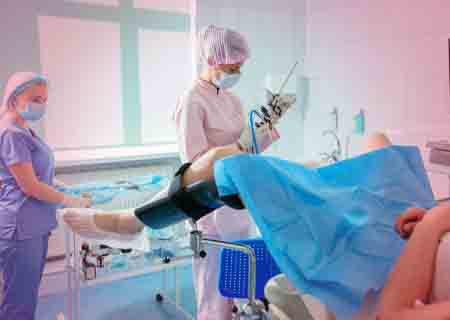Hysteroscopy Surgery: Understanding Diagnosis and Treatment for Abnormal Uterine Bleeding with Expert Precision
Hysteroscopy is a procedure that allows your doctor to look inside your uterus in order to diagnose and treat causes of abnormal bleeding. Hysteroscopy is done using a hysteroscope, a thin, lighted tube that is inserted into the vagina to examine the cervix and inside of the uterus. Hysteroscopy can be either diagnostic or operative.
What is hysteroscopy used for?
A hysteroscopy may be used to find the cause of various problems such as:
-
Heavy or irregular bleeding that has not got better with medication.
-
Bleeding in-between periods.
-
Bleeding after your menopause.
-
Irregular bleeding whilst you are taking hormone replacement therapy (HRT).
-
If you are thinking about having an operation to make your periods less heavy (endometrial ablation or microwave ablation).
-
Unexplained miscarriages.

As well as being used to investigate the cause of various problems, it can also be used to:
-
Remove polyps – small lumps of tissue growing on the lining of the uterus.
-
Remove scar tissue in the uterus.
-
Remove adhesions (areas where the walls of the uterus are sticking together).
-
Remove fibroids (noncancerous growths in the uterus).
-
Locate a ‘lost’ or stuck contraceptive device, such as an IUD (coil).
Before you have the procedure your doctor will talk to you about the test. Your doctor may discuss a number of different treatment options with you. This is because it may be possible to treat the cause of your symptoms immediately, using the hysteroscope. In order to do this you must consent (agree) to the treatment. It is up to you to decide which treatment option is best for you.
What happens during a hysteroscopy?
In some hospitals, you may have an ultrasound scan before you have the hysteroscopy surgery.
A hysteroscopy can either be done under general anaesthetic, which means you will be asleep during the procedure, or with a local anaesthetic. If you have a local anaesthetic, you will be awake. You may be given a sedative which won’t put you to sleep but may help you feel more relaxed. If you have a local anaesthetic, you may be asked if you wish to see the pictures coming from the hysteroscope. Some people do not wish to do this, but others find it helpful.
Your doctor, particularly the best hysteroscopy surgeon in South Delhi, may use a speculum (the same instrument used in a cervical screening test) so that he or she can see the cervix (neck of the uterus). Then the doctor passes the hysteroscope through the cervix into the uterus.
The hysteroscope is connected to a camera and a TV screen, which show the inside of the uterus. Some gas or fluid may be pumped into the uterus to make it expand. This makes it easier to see the lining of the uterus. After this, the doctor may take a biopsy (tiny piece of tissue from the uterus). This will be sent to the laboratory for examination under the microscope. Sometimes polyps are found, and it may be possible to remove these during the test. After the procedure is completed the hysteroscope is gently removed.
A hysteroscopy takes between 5-30 minutes. If you are awake you may feel something like period cramps at some stages. A lot of women feel no discomfort, or only minimal discomfort.
Dr Jaya Agarwal clinic is providing the best Hysteroscopy Surgery in South Delhi.
